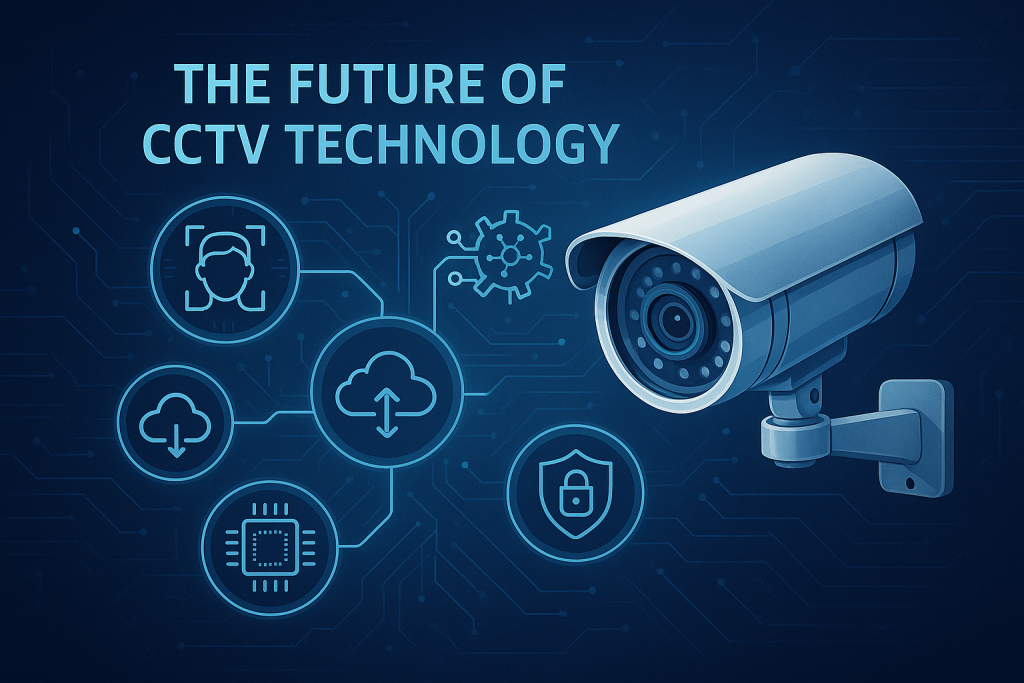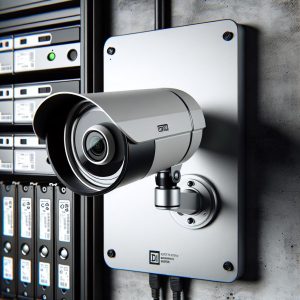The Future of CCTV Technology: Advancements, Challenges, and Possibilities
Closed-Circuit Television (CCTV) technology has undergone a remarkable transformation since its inception in the 1940s. Originally used for monitoring rocket launches during World War II, CCTV has evolved into a cornerstone of modern surveillance, providing security across homes, businesses, public infrastructure, and even wildlife reserves. As we step into a new era marked by rapid technological innovation, the future of CCTV is being shaped by groundbreaking developments in artificial intelligence (AI), machine learning (ML), the Internet of Things (IoT), cloud computing, and advanced image processing. This article explores in detail the trajectory of CCTV technology, its expected future developments, and the broader implications for privacy, society, and security.
1. Evolution of CCTV Technology: A Brief Overview
To understand where CCTV is heading, it’s important to trace its development:
- 1942: First CCTV system installed in Germany for monitoring rocket launches.
- 1960s–1980s: Analog CCTV becomes widespread in banks, stores, and government buildings.
- 1990s: VCRs allowed video recording; CCTV became popular for crime prevention.
- 2000s: Introduction of digital IP (Internet Protocol) cameras marked a significant leap in quality and connectivity.
- 2010s: Integration with smartphones and cloud services enabled remote access and storage.
2. AI and Machine Learning: The Brains Behind the Lens
One of the most transformative forces in the future of CCTV is artificial intelligence. AI is moving CCTV from passive observation to proactive threat detection.
Key Innovations:
- Facial Recognition: AI-powered systems can now identify individuals in real time, even in crowds. This technology is increasingly used in airports, stadiums, and urban surveillance.
- Behavioral Analysis: Machine learning algorithms can detect abnormal behaviors (e.g., loitering, sudden movements, trespassing) and trigger alerts automatically.
- License Plate Recognition (LPR): Enhances vehicle tracking and traffic enforcement.
- Emotion Detection (emerging): Some systems are being trained to interpret facial expressions to detect aggression or stress in high-security environments.
These capabilities reduce reliance on human monitoring, minimize errors, and increase responsiveness.
3. Cloud-Based CCTV Systems: Scalability and Accessibility
The transition to cloud-based video surveillance systems (VSS) is redefining storage and access.
Advantages of Cloud Integration:
- Scalability: Cloud solutions can easily expand without expensive on-site hardware.
- Remote Access: Footage can be accessed anytime, anywhere, using smartphones or computers.
- Automated Backups: Reduces the risk of data loss due to physical damage or theft.
- Cost Efficiency: Shifts capital expenditure to operational expenditure through subscription models.
In the future, cloud storage will be paired with edge computing to balance real-time processing and remote data archiving more effectively.
4. High-Resolution and Multispectral Imaging
Camera hardware continues to evolve with improvements in:
- 4K and 8K Resolution: Provides clearer images and more accurate details for forensic analysis.
- Multispectral and Thermal Imaging: Useful in low-light or complex environments such as smoke-filled areas or complete darkness.
- Panoramic and 360-Degree Cameras: Reduces the number of cameras needed while increasing field of view.
Advanced image sensors combined with AI enhance footage clarity in poor weather conditions, nighttime, and high-contrast scenes.
5. The Rise of IoT-Enabled CCTV Systems
The Internet of Things is creating an ecosystem of interconnected devices that work together to improve surveillance effectiveness.
Examples of IoT Integration:
- Smart Alarms and Lights: Cameras can trigger alarms and activate lights when detecting unusual movement.
- Integration with Home Automation: Smart CCTV works with other devices like doorbells, thermostats, and locks for seamless security.
- Environmental Monitoring: Some systems can monitor temperature, smoke, gas leaks, or air quality, expanding their utility beyond security.
With 5G connectivity, these systems will gain ultra-low latency, enhancing real-time alerts and remote control.
6. Privacy and Ethical Considerations
As CCTV becomes more intelligent and pervasive, privacy concerns are escalating.
Major Issues:
- Surveillance Overreach: Facial recognition in public spaces raises concerns about mass surveillance and erosion of anonymity.
- Data Security: Cloud-based systems can be vulnerable to cyberattacks if not properly encrypted.
- Bias and Discrimination: AI systems have been found to exhibit biases in facial recognition, leading to false identifications.
Future regulations, such as the EU’s AI Act and data protection laws (e.g., GDPR), will shape how surveillance technologies are deployed and monitored ethically.
7. Smart Cities and CCTV Integration
CCTV will play a critical role in the development of smart cities, where data-driven governance improves quality of life.
Smart City Use Cases:
- Traffic Management: Cameras assist in monitoring congestion and dynamically controlling traffic signals.
- Urban Safety: Surveillance is used in crowd control, event monitoring, and disaster response.
- Public Health Monitoring: Thermal imaging was widely used during COVID-19 to detect fevers in public spaces.
Future systems will feed data into centralized smart city platforms for a holistic view of urban activity.
8. Edge Computing and Real-Time Analytics
With edge computing, video data is processed at the camera or local node level rather than in a distant cloud.
Benefits of Edge Processing:
- Reduced Bandwidth Usage: Only relevant data (e.g., incidents) is transmitted.
- Faster Decision-Making: Critical alerts are generated instantly without cloud lag.
- Lower Latency: Essential for time-sensitive applications like emergency response or industrial monitoring.
As edge devices become more powerful, expect CCTV cameras to operate as autonomous analytical units.
9. Blockchain for Data Integrity and Transparency
Emerging research points to blockchain technology as a way to secure video evidence.
- Immutable Records: Video footage can be timestamped and stored in tamper-proof blocks.
- Audit Trails: In legal or insurance contexts, blockchain ensures evidence integrity.
- Decentralized Storage: Reduces dependence on single cloud providers.
Though still in early stages, blockchain may soon become a standard in high-security or legal surveillance systems.
10. CCTV in Drones and Robotics
Future CCTV applications are extending into aerial and mobile platforms:
- Surveillance Drones: Used in border control, search and rescue, and crowd monitoring.
- Autonomous Patrol Robots: Equipped with cameras, these robots can patrol premises and report intrusions in real time.
These mobile surveillance units enhance coverage and provide unique vantage points.
11. The Consumerization of CCTV: Smarter Homes
The future of CCTV isn’t just industrial or governmental—it’s personal.
- DIY Home Security: Affordable kits allow users to install and monitor their own systems.
- AI Assistants Integration: Cameras are now compatible with Alexa, Google Assistant, and Apple HomeKit.
- Pet and Baby Monitoring: Cameras serve multi-functional roles, including monitoring family and pets.
Consumer expectations for ease of use, affordability, and smart features will push manufacturers to continue innovating.
12. What Lies Ahead? Predictions and Challenges
Predicted Trends:
- Mass adoption of AI-powered analytics.
- Greater use of 5G-connected cameras.
- Fusion of visual, audio, and sensor data for holistic monitoring.
- Expansion of privacy-centric features like data masking or encrypted streaming.
Challenges:
- Navigating the fine line between security and personal freedoms.
- Managing data overload with more high-resolution cameras.
- Ensuring global compliance with diverse regulatory standards.
Conclusion: Surveillance with Intelligence and Responsibility
The future of CCTV technology is defined by intelligence, integration, and interconnectivity. As surveillance systems become more capable, the demand for ethical deployment, data security, and transparency will be just as critical as the technology itself. Whether protecting homes, managing cities, or securing global infrastructures, CCTV will continue to evolve—moving from a tool of observation to a comprehensive system of situational awareness and proactive response.
By embracing innovation while safeguarding civil liberties, the future of CCTV promises not only a safer world but a smarter, more responsive one.
Secure Your Home and Business with Garrison Alarms!
Experience unmatched safety with Garrison Alarms – your trusted partner in cutting-edge home and business security solutions. With over 35 years of experience, we offer expert installation, state-of-the-art technology, and personalized security strategies tailored to your unique needs.
Our Services Include:
- Home & Business Alarms: Maximize security with our advanced wired and wireless alarm systems.
- CCTV Systems: Protect your property with high-resolution, 4K HD, and color night vision cameras.
- Access Control: Secure your premises with keypad entry, biometric solutions, and more.
- Alarm Monitoring: 24/7 monitoring to ensure your safety and peace of mind.
Why Choose Garrison Alarms?
- Expert & Professional Service: Our licensed technicians provide top-notch installation and support.
- Customer Satisfaction: We prioritize your security and satisfaction with a focus on quality and reliability.
- Affordable Pricing: Get the best security solutions at competitive prices.
Get a FREE Quote Today! Visit Garrison Alarms or call us at 09 520 4875 to learn more and secure your property today!
Garrison Alarms – Your Safety, Our Priority





